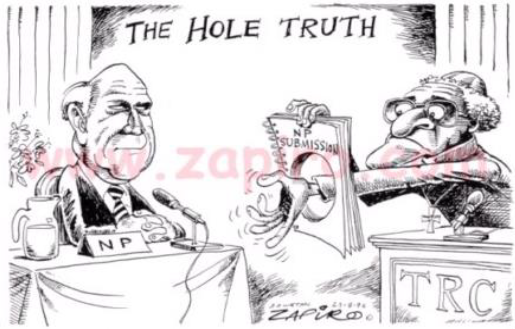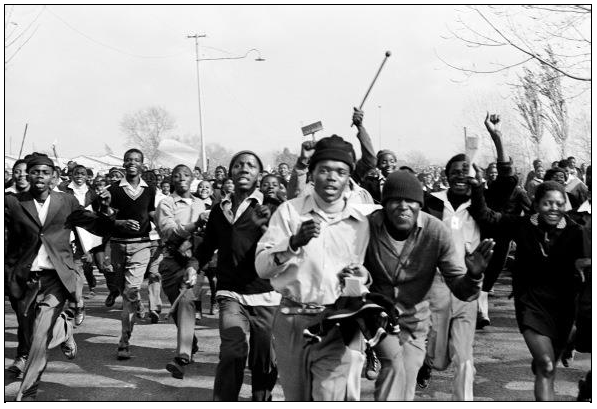HISTORY PAPER 2 GRADE 12 ADDENDUM - NSC PASPT PAPERS AND MEMOS JUNE 2016
Share via Whatsapp Join our WhatsApp Group Join our Telegram GroupHISTORY P2
GRADE 12
JUNE 2016
ADDENDUM
NATIONAL SENIOR CERTIFICATE
QUESTION 1: HOW DID STEVE BIKO AND THE PHILOSOPHY OF BLACK CONSCIOUSNESS INFLUENCE THE STUDENT UPRISING OF 1976?
SOURCE 1A
These extracts are taken from the writings of Steve Biko, the founder of the South African Student Organisation (SASO) and a leader of the Black Consciousness Movement.
All in all the black man has become a shell, a shadow of a man, completely defeated,
|
* By ‘black’ Biko is referring to all people classified under Apartheid as ‘African’, ‘Coloured’ or ‘Indian’.
SOURCE 1B
This extract discusses the role of the Black Consciousness affiliated, South African Students’ Movement (SASM) in raising political awareness and organising school students in Soweto during the 1970s.
| In January 1972 the African Student’s Movement (ASM) pledged itself to build a national movement of school students which would work alongside the South African Student Organisation (SASO), the Black Consciousness organisation at black universities. As a result ASM changed its name to the South African Students’ Movement (SASM)… 1974 was a turning point for SASM … Teboho Mohapi (a former student of Morris Isaacson School in Soweto) explains: SASM (South African Students Movement) had reached a point where it couldn't hide from students and we gradually became more and more conspicuous (obvious/ noticeable) in the schools … Towards the end of my Standard 8 (Grade 10) year, we'd clearly gathered a large number of students at my school. Some of us started rotating from school to school to talk to the students. We'd talk about Bantu education as a poison that enslaved us. This was the gist (idea) of politicising students and influencing them. This was how we organised SASM into a fully-fledged organisation. As SASM leaders began to gain confidence, they organised large-scale meetings and guest speakers addressed the students, their rousing speeches raising the political temperature at the schools. Sibongile Mkhabela, who joined SASM in 1975, remembers how ‘the university guys who we respected a great deal, would come to address us and emphasise our consciousness as black people, our need to appreciate ourselves.’ By the end of 1974, the strongest branches of SASM were at Morris Isaacson and Neledi, followed by Orlando High, Sekano Ntoana and Orlando West. Although it is difficult to estimate precisely how many students were drawn into the ranks of the organisation, SASM events attracted large audiences and the movement undoubtedly helped to create a core of highly politicised and militant (school) students. |
SOURCE 1C
This is an extract from an essay by academic Jonathan Hyslop in which he discusses the co-ordinating role played by the South African Student Movement (SASM) in the Soweto uprising of 1976. He also illustrates the influence which Black Consciousness ideology had on the generation of 1976.
| By late 1974 and into 1975, there were indications of new militancy among school students. In the Eastern Cape SASM was active … in Soweto there was a confrontation between students and security police … on 13 June 1976 SASM then convened a delegate meeting at Naledi High School which established the Soweto Students Representative Council (SSRC). The SSRC called a demonstration for 16 June. The shooting of students by police outside Orlando West Junior High School on 16 June 1976 led immediately to widespread student uprisings, with attacks by students on property and institutions identified with the state, and a harsh police response which left many dead. Riots spread quickly through the Rand and Pretoria. The closure of state schools by the Minister, and the dropping of Afrikaans decision, failed to check (stop) the spread of the upheaval. On 11 August conflict broke out in the schools of the African townships of Cape Town. Before the end of August, and in striking confirmation of Black Consciousness’s black unity line, students in the Cape Town coloured townships were drawn in, participating in militant demonstrations in central Cape Town. This followed by a stay-away on 16 and 17 September. Within four months there were incidences in 160 communities. |
SOURCE 1D
This is a photograph by P Magubane taken on 16 June 1976. The caption of the photograph reads 'The Young Lions of Soweto, 16 June 1976'.
QUESTION 2: WHAT WERE THE CHALLENGES FACING THE TRC?
SOURCE 2A
This source explains the different aims of the TRC.
| Aim 1 To provide for the investigation and establishment of as complete a picture as possible of the nature, causes and extent of gross human rights violations committed from the period of 1 March 1960 until 31 December 1993… within or outside the Republic emanating (starting) from the conflicts of the past. [From: The law establishing the TRC] Aim 2 The TRC held hearings around the country. Hundreds came forward and testified about the detentions, torture and killings that took place during the Apartheid era. From these stories, the TRC began to identify the perpetrators of human rights violations. The TRC then summoned these people to make presentations and to be questioned about their activities. Aim 3 The TRC’s objective was not to prosecute people but to get the perpetrators to disclose all their activities. If the members of the TRC believed that a perpetrator had actually made a “full disclosure”, it had the power to give that person amnesty. |
SOURCE 2B
This source describes the different opinions of people regarding the impact of the TRC.
These sources explains the different perspectives of people regarding the importance of the TRC.
| Perspective 1 The TRC has become an intensely illuminating (revealing) spotlight on South Africa’s past. [It] has allowed the past to be told through the personal recollections of those who testify before it…the people who tell these stories, along with the people who listen to them are living South Africans…. Many voices of this country were long silent, unheard, often unheeded (disregarded) before they spoke, in their own tongues, at the microphones of South Africa’s Truth Commission. The voices of ordinary people…have shaped the passage of history. Perspective 2 “Those who forget the past are doomed to repeat it… You have to know about the TRC because it made a very important contribution to how we are able to live together reasonably harmoniously. Reconciliation is a process, not an event. The TRC made a contribution to that process…” |
SOURCE 2C
This cartoon depicts the National Party’s submission to the Truth and Reconciliation Committee chaired by Desmond Tutu.
 |
SOURCE 2D
| Opinion 1 (Jeannie Noel, detainee and torture victim in the 1970s – witness to the TRC) Unfortunately I still can’t accept South African whites very fondly. But I’m hoping that my grandchildren will be untainted by this racism and the things that we had to fight against… Opinion 2 “…in many ways it (the TRC) has been unbelievable. It has been almost breathtaking, this willingness to forgive, this magnanimity (generosity/fairness), this nobility of spirit…The TRC is not required to achieve unity and reconcile our nation – it is required to promote and contribute to it.” Opinion 3 For me the importance of the TRC is that it placed the truth on record. Not the whole truth to be sure… But for all (its) shortcomings the TRC was able to reveal enough the essentials of the Apartheid regime’s evil doings… |
